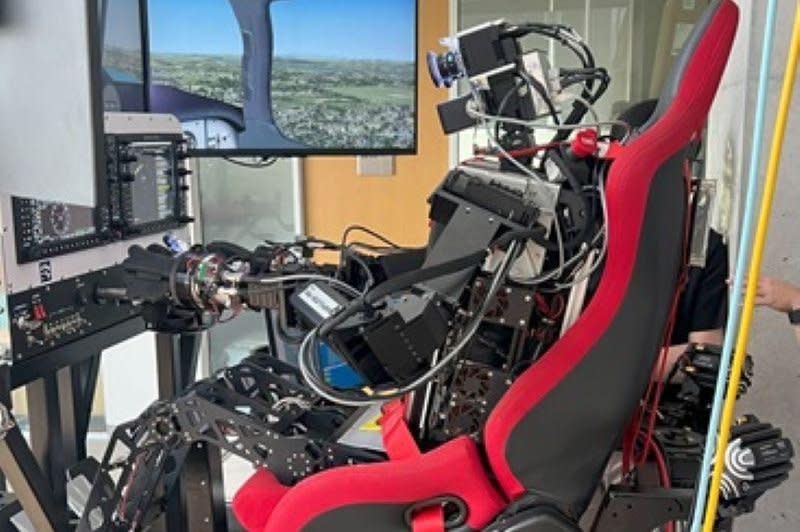Meet Pibot: South Korean scientists develop humanoid aircraft pilot

SEOUL, July 20 (UPI) -- The Korea Advanced Institute of Science and Technology said its scientists have developed a humanoid robot that can fly aircraft.
Headed by Professor Shim Hyun-chul, the researchers demonstrated how the human-like robot, dubbed Pibot, operated an airplane from inside a cockpit simulator.
The KAIST team had no adjustments made to the simulator as Pibot is designed to fly an aircraft using its limbs, just like a real pilot, the institute said Wednesday.
Unlike conventional robots or robotic systems, which are designed for preprogrammed or repetitive tasks from a fixed position, Pibot can assess the situation inside and outside the plane using its multiple cameras.
That's the key feature which distinguishes Pibot from the automated system like autopilot or uncrewed airplanes, Shim told UPI News Korea.
"This is the world's first humanoid pilot. In some ways, it's more capable than human pilots because it can remember all the air routes like the Jeppesen Chart," Shim said.
The Jeppesen Chart is a popular aeronautical tool consisting of navigational information, operations planning functions, flight planning products and software.
The KAIST team plans to have Pibot fly a real aircraft before 2026, from takeoff to landing. For the actual flight test, though, the scientists will have to overcome further technical and regulatory hurdles.
Shim said the humanoid pilot may be able to replace humans tasked with dangerous jobs.
"We had Pibot drive a car at a low speed and it did fine. I also think the robot can be used to drive tanks and other armored vehicles without the vehicles' configurations having to be changed, inside or outside, to suit the robot," Shim said.
"For example, it could be used for removing land mines while in a drive-through of dangerous terrain," he said.
The Pibot project was supported financially by South Korea's Agency for Defense Development, which is trying to find ways to shore up its capabilities as its military force is shrinking from the country's chronically low fertility rate.

